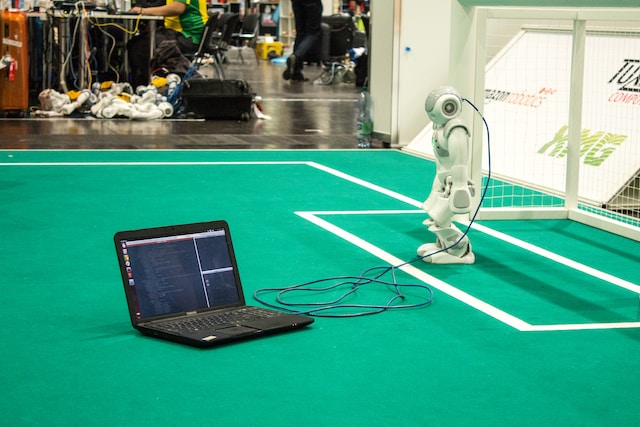When we delve into the realm of science fiction and bring it to reality, we find humanoid robots leading the charge. These marvels of engineering are no longer confined to just Hollywood scripts. They’re here, and they’re changing the game. And the dance of these machines? Well, that’s where real-time motion planning jumps in. So, strap in and let’s get started!
The ABCs of Motion Planning
The Science Behind the Moves
At its heart, motion planning is about helping robots find their way. Think of it as giving them a roadmap of how to get from point A to point B, without stumbling into obstacles. This isn’t just about left or right turns; it’s about understanding the environment, predicting movement patterns, and adjusting in real-time.
A Dance of Algorithms and Sensors
The magic of motion planning lies in its algorithms. These mathematical marvels, combined with sensors, allow humanoid robots to perceive their surroundings, make decisions, and act on them. It’s no longer about just predefined motions. With the help of advanced sensors, robots can now react to dynamic changes in the environment.
Real-Time Processing
Why Time Matters
In the industrial sector, time is money, and efficiency is gold. Humanoid robots are designed to function seamlessly, and any delay in their movements can lead to significant losses. Real-time processing ensures that these robots make split-second decisions, keeping the production line flowing and the wheels of industry turning.
Beyond Just Speed
While speed is of the essence, real-time processing isn’t just about being quick. It’s about being accurate. With the complex tasks these robots perform, there’s little room for error. By processing data in real-time, they can adapt to sudden changes, ensuring both safety and efficiency.
The Balance of Performance and Adaptability
In an industrial setting, humanoid robots need to maintain a delicate balance between performance and adaptability. While they need to carry out tasks with precision, they must also be ready to adapt to unforeseen changes. Real-time processing is the linchpin that holds this balance together, allowing robots to function with both accuracy and flexibility.
The Road Ahead for Humanoid Robots
The Promise of the Future
As technology advances, so does the potential of humanoid robots. Their role in industries is bound to expand, making their ability to adapt in real-time even more crucial. Whether it’s assisting in surgeries or helping in disaster recovery, their value cannot be overstated.
Challenges on the Horizon
While the future is promising, it’s not without challenges. The complexity of tasks these robots are expected to handle is ever-increasing. The integration of more sophisticated sensors, better algorithms, and faster processors will be paramount to address these challenges.
Enhancing Human-Robot Collaboration
Building Trust Through Predictability
Humanoid robots, by design, aim to mimic human actions and responses. But for these robots to be truly accepted in our daily lives and workplaces, they must be predictable. Trust is built when humans can anticipate a robot’s next move, ensuring safety and fostering collaboration. Real-time motion planning is that bridge to predictability, making interactions between humans and robots smoother.
Education and Training
While robots are continuously learning from their environments, humans must also be trained to understand and cooperate with these machines. By fostering an environment of mutual learning, we can unlock the full potential of human-robot collaboration.
Evolving Ethical Considerations
The Responsibility of Creation
With great power comes great responsibility. As developers and engineers shape the future of humanoid robots, ethical considerations come to the forefront. Ensuring these creations benefit society while minimizing potential harm is paramount.
Privacy in the Age of Robotics
As humanoid robots become more integrated into our lives, concerns about privacy will inevitably arise. With advanced sensors capturing vast amounts of data, striking a balance between utility and privacy is crucial. Establishing robust data protection standards will be key to addressing these concerns.
In the tapestry of science and technology, humanoid robots are both a masterpiece and a work in progress. As we continue to harness the power of real-time motion planning, the horizon looks promising, with endless possibilities waiting to be explored.

